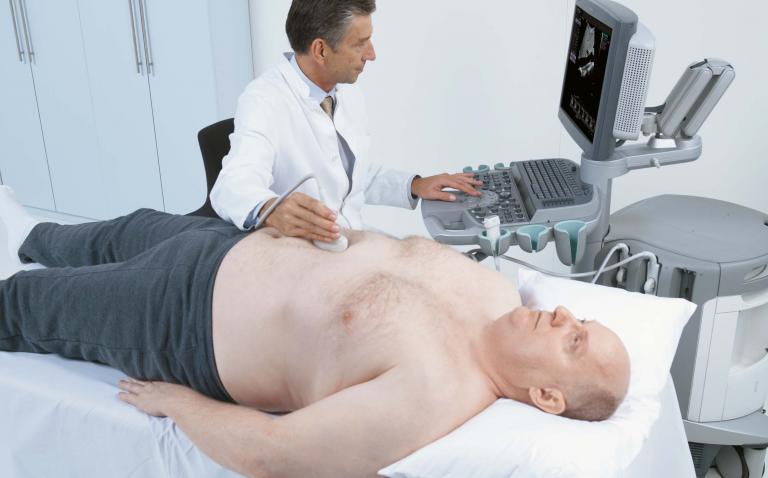Ground-breaking new ultrasound technology capable of diagnosing and monitoring liver disease without the need for surgery has been approved for use by the NHS.
The ultrasound technique, called Virtual Touch Quantification™ (VTQ) from Siemens Healthcare, assesses the stiffness of the liver based on readings from invisible, high-intensity shear waves, which are transmitted through the liver.
The National Institute for Health and Care Excellence (NICE) has issued guidance, including cost modelling that suggests the use of VTQ could save the NHS around £434 per patient compared with a highly-invasive liver biopsy. The current gold standard method for assessing liver damage, a biopsy, involves going under local anaesthetic and a section of the liver being removed for assessment. This method only takes a small sample size from a focal area and results in a misdiagnosis in 20–40% of cases on average.1
VTQ uses Acoustic Radiation Force Impulse (ARFI) to provide an accurate evaluation of liver tissue stiffness, a key indicator of liver disease, through ten measurements taken across the liver. Shear waves are transmitted through the liver and attenuate approximately 10,000 times more rapidly than with conventional ultrasound. The waves travel at varying speeds through liver tissue depending on whether the liver is flexible and healthy, or stiff and damaged due to fibrous scar tissue caused by an ongoing liver condition.
The NICE guidance recommends VTQ for diagnosis of chronic hepatitis B or C. Liver disease is the only major cause of death still increasing year-on-year and is currently the third most common cause of premature death in the UK.2 It is also estimated that up to 466,000 people have the chronic hepatitis C virus in the UK.3 It is possible, however, to reverse liver disease if diagnosed at the early stages.
Andrew Langford, Chief Executive of the British Liver Trust comments, “The VTQ ultrasound technique marks a step towards improved diagnosis – both unobtrusive and swift. More investment into innovative diagnosis treatments and technology could save thousands of lives. If we can identify liver disease early enough there is opportunity to introduce effective lifestyle changes or treatment plans with the potential to reverse its effects. It is essential that diagnostic tests are easily accessible, safe and provide rapid results.”
The Virtual Touch Quantification procedure takes no longer than five minutes to complete and is performed by a clinician who will also interpret the data, meaning results can be obtained rapidly. Unlike a biopsy, no hospital stay or post procedure monitoring is required.
Mark Flint, Division Lead for Ultrasound at Siemens Healthcare UK adds, “For almost a century, clinicians have used the liver biopsy to diagnose liver disease, involving a long needle with risk of bleeding and infection. Virtual Touch Quantification has the potential to transform this practice, using tissue strain imaging which should remove the need for an invasive procedure. It is also beneficial for patients where current methods of non-invasive liver damage assessment are unsuitable due to factors including obesity or illness.”
“We believe the NICE guidance will see this underutilised technology become increasingly prevalent within the NHS. In the future, this could even be extended to primary care settings such as GP surgeries for ease-of-access.”
Siemens Healthcare is one of the world’s largest suppliers to the healthcare industry and a trendsetter in medical imaging, laboratory diagnostics, medical information technology and hearing aids. Siemens offers its customers products and solutions for the entire range of patient care from a single source – from prevention and early detection to diagnosis, and on to treatment and aftercare. By optimising clinical workflows for the most common diseases, Siemens also makes healthcare faster, better and more cost-effective. Siemens Healthcare employs some 52,000 employees worldwide and operates around the world www.siemens.co.uk/healthcare.
References
- Poynard et al. Clin Chem 2004.
- https://publichealthmatters.blog.gov.uk/2014/09/29/liver-disease-a-preventable-killer-of-young-adults/ Accessed Sept 2015.
- http://www.britishlivertrust.org.uk/about-us/media-centre/facts-about-liver-disease/ Accessed Sept 2015.










